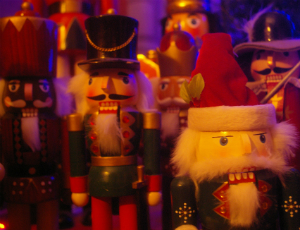I have probably seen some version of The Nutcracker ballet every year since I was a child. There was the annual holiday field trip to the Auditorium Theater to see the Joffrey Ballet production in elementary school. Sometimes my family would cozy up in the living room to watch whatever ballet version was playing on PBS. There is also the urban, jazzy version performed by Chicago's own Joel Hall Dancers called "Nuts & Bolts," which combines Tchaikovsky's original music, Duke Ellington's Three Suites album and house music. But where did the original story of the Nutcracker come from?
E.T.A. Hoffmann wrote the original story, The Nutcracker and Mouse King, in 1816. Hoffmann was a Prussian civil servant and didn't start writing fiction until his early 30s. With most of his works, he wanted to revolutionize the fairy tale and he used his stories like the Nutcracker to criticize the bourgeoisie parenting style of the middle class. Hoffmann's original story is very different from the popular ballet today and includes a mean Godfather Drosselmeier, a creepy, seven-headed Mouse King and the most interesting story within a story, "The Hard Nut," a tale about the Nutcracker's origins.
Famous French writer Alexandre Dumas adapted Hoffmann's Nutcracker and Mouse King with his own version in 1845, The Tale of the Nutcracker. Dumas softened up the story by creating a Drosselmeier who loves kids and adding some religious references that some critics say Hoffmann probably wouldn't have liked. Don't worry, Marie's brother, Fritz (who breaks the Nutcracker at the beginning of story), still remains an arrogant troublemaker in both versions.
Whether you decided to read the books or go to the ballet, there is a version of The Nutcracker that is just right for you. Hoffmann believed that the Nutcracker is about igniting the imagination and realizing your inner dreams and desires. I think everyone can relate to that.



Add a comment to: The Tale of the Nutcracker Isn’t Hard to Crack